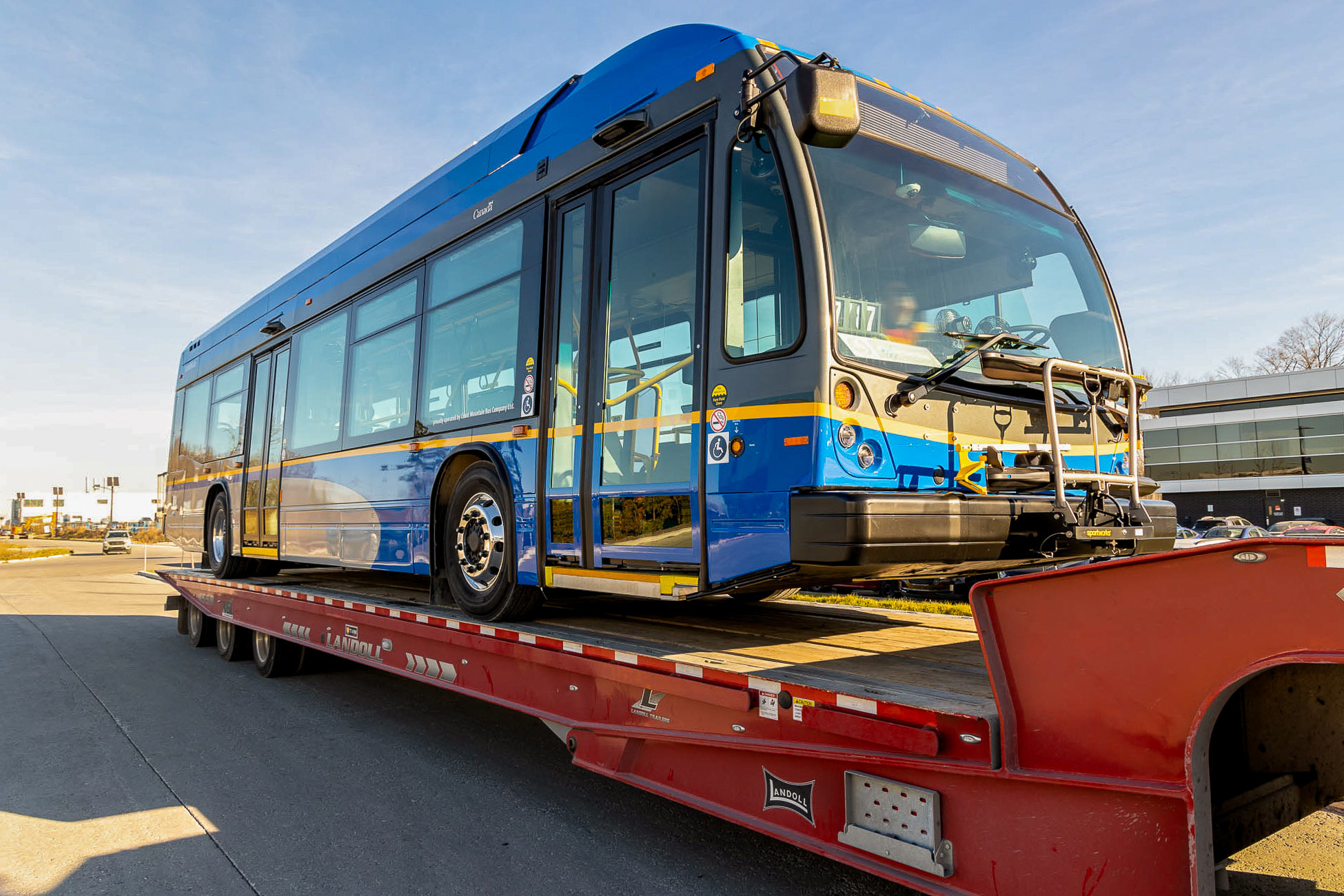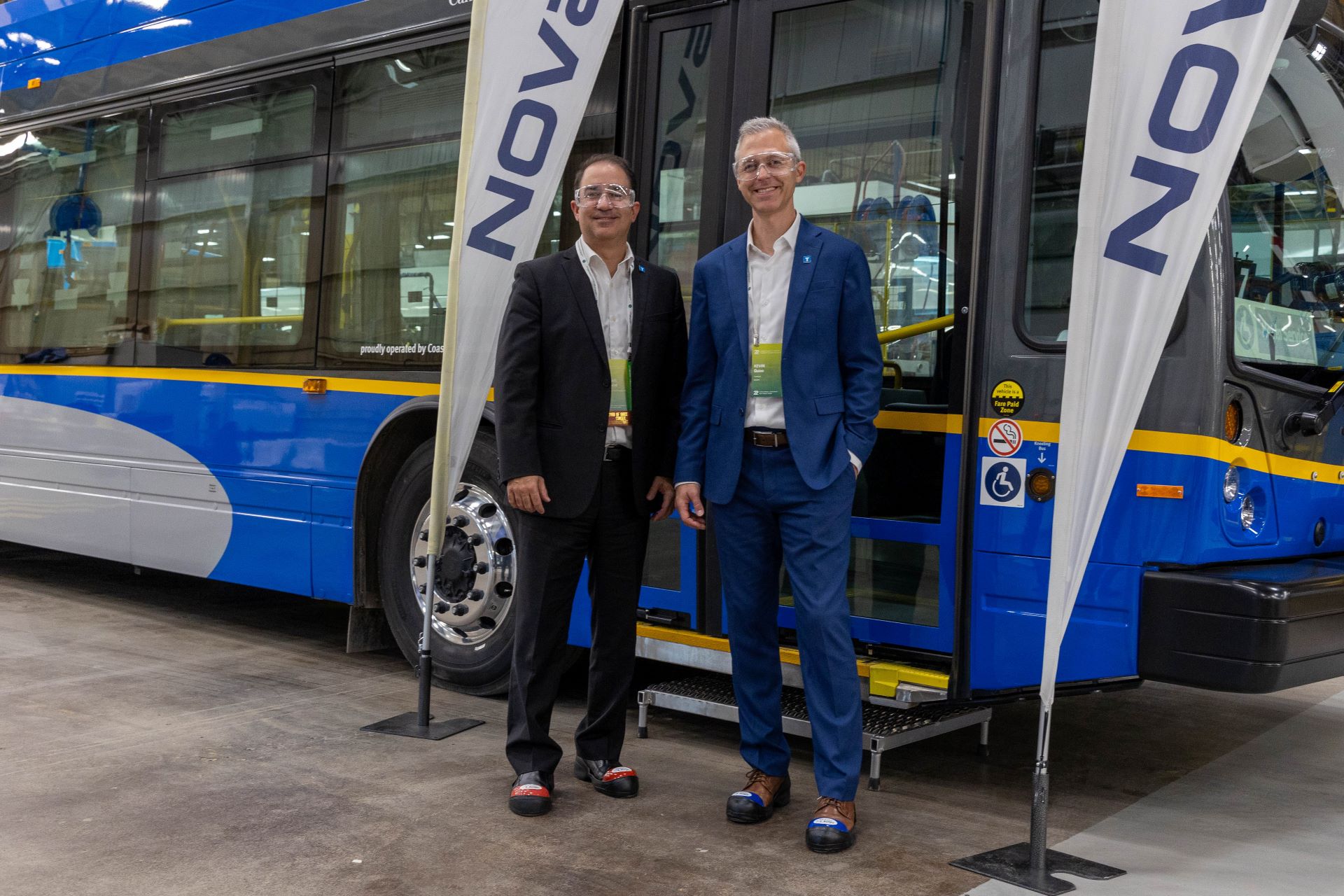Our new battery-electric bus arrives in Metro Vancouver
Our new battery-electric bus arrives in Metro Vancouver

The first of TransLink’s 15 new battery-electric buses have arrived in Metro Vancouver, an important milestone as they charge ahead for an expected early 2023 date to enter service. Over the next few months, Nova Bus and Coast Mountain Bus Company has to first test the buses and prepare it for service.
Once all 15 are in service, it will fully electrify our 100 22nd Street/Marpole Loop route and quadruple the size of our battery-electric bus fleet. This marks a leap forward in our journey towards net-zero greenhouse gas emissions and a more climate-resilient transit system by 2050 as part of our Climate Action Strategy.
Our long-term goal is to introduce 400 new battery-electric buses to our fleet by 2030 and to fully transition the fleet to zero-emission vehicles by 2040. Each battery-electric bus emits roughly 70 tonnes less GHG emissions annually compared to a diesel bus.

Earlier this year, we tested a prototype of the bus, which is a new model — the Nova Bus LFSe+, to ensure its long-term effectiveness for Metro Vancouver.
Here’s what we know about them based on those tests.
Distance
This new model is more flexible in how often it needs to charge. The bus can travel more than 150 kilometres on a single charge, even during winter months. The current battery-electric bus that’s in service from Nova can only travel about 40 kilometres on a single charge.
Charging
TransLink currently operates two charging stations located at the 22nd Street Station bus exchange and the Marple Loop — one manufactured by ABB and the other by Siemens. These on-route overhead fast-charge stations ensure the buses can continuously recharge and operate throughout the day. The charging stations:
- Top up the battery-electric buses for the next trip in under six minutes.
- Can charge buses while passengers board.
- Use an automated overhead mechanism that charges quickly through the bus roof.






Curious about the unit number – I heard 22101 and 22301 tossed around, just looking to confirm
Juan I work for CMBC & the number will is 22501
Spellcheck inoperative ?
Wonder if it’s capable of provisioning adapter support for in-motion trolley charging accessory later in the future. Then at least terminal turnarounds can be hastened while being able to implement trolley infrastructure around Metro Vancouver despite some segments not connected to the main network.
The power required for charging is far too high for trolley wires and sort of defeats the purpose of putting a huge battery on the bus.
No mention of cost for a bus, cost of the charging station, or how much in taxpayer subsidy for this system.
is the battery located on the roof of the bus or down below like a typical car?
Why did it have to be hauled on a truck? I’m sure it wasn’t to keep kilometers off the odometer.
Cause Quebec is a lot further away than its 150km range, and there aren’t any of em special charging stations on the highway there
Plus even if there were charging stations, these bus buses have speed inhibitors
I would love to know what this bus costs, what its expected operating/maintenance costs are compared to a conventional ICE bus, what the expected lifespan of the battery is, replacement cost of said battery at end of life etc etc. I suspect the numbers are awful otherwise there’d be a mention of it in this article